|
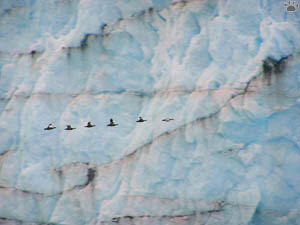
Upland geese (Chloephaga picta), Parque Nacional Los Glaciares,
Argentina.
The Andes Part 3: The Andes of Patagonia
|
Andes of Patagonia are virtually uninhabited. The highest mountains are covered
with extensive icefields. In the far south, the mountains continue to Tierra
del Fuego and the Scotia Arc.
|
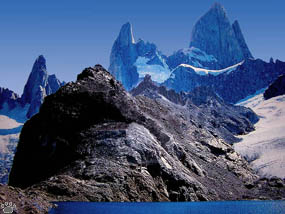 |
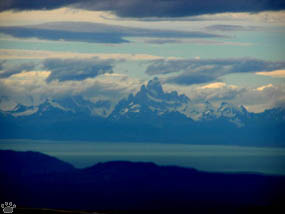 |
| Views of Cerro Fitzroy, PN Los Glaciares, Argentina. |
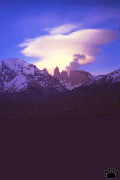
Torres del Paine, Chile. |
The eastern slope is very windy and relatively dry,
with intermontane valleys either covered with shortgrass steppe or filled with
huge glacial lakes. The southern part of that area is the most scenic. Parque
Nacional Torres del Paine in Chile and Parque Nacional Los Glaciares in Argentina
have some of the world's most impressive mountain landscapes, such is Fitzroy
Range (above). Remote and pristine just a decade ago, these parks are now popular
tourist destinations. |
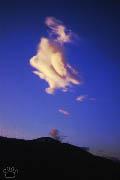
Clouds, PN Torres del Paine. |
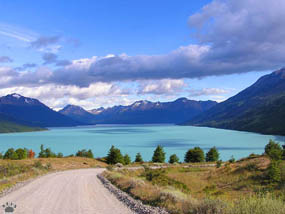 |
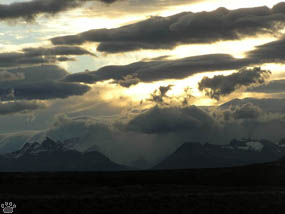 |
| Parque Nacional Los Glaciares, Argentina. |
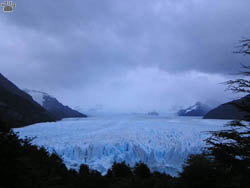
Perito Moreno Glacier in bad weather. |
Perito Moreno in PN Los Glaciares is now the most
visited glacier in South America. |
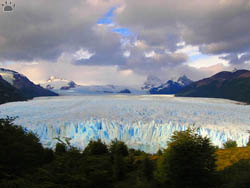
Perito Moreno Glacier in good weather. |
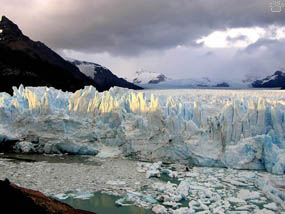 |
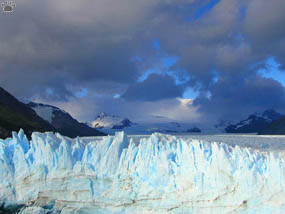 |
| Perito Moreno Glacier flows from
the South Patagonian Icefield. |
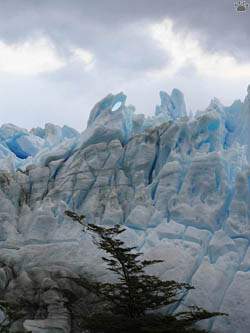
Perito Moreno Glacier enters the forest in some years. |
This glacier is easily accessible. It's also very
active. Small-scale calving can usually be seen every hour or two; larger icebergs
break off at least once a day. |

Alfa male guanaco on a lookout. PN Los Glaciares. |
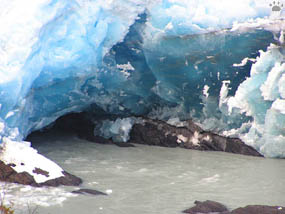
River flowing out of Perito Moreno Glacier. |
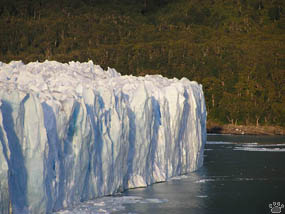
Edge of Perito Moreno Glacier forms a tiny ice shelf. |
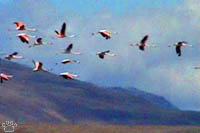
Chilean flamingos (Phoenicopterus chilensis),
PN Los Glaciares. |
Andean foothills have plenty of wildlife, such as
guanacos, pumas and huge concentrations of birds,
especially around small lakes. In winter some wildlife is easier to see, but the
weather can be brutal. |

Chilean flamingos (Phoenicopterus chilensis),
PN Los Glaciares. |
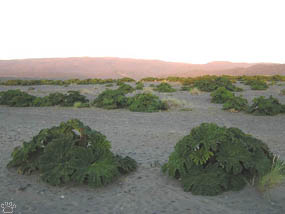
Giant Gunnera plants, Parque Nacional Chiloe. |

My car in Gunnera "forest", Parque Nacional Chiloe. |

Rainbow over Carretera
Austral in Parque
Nacional Queluat. |
The western side of Patagonian Andes is no less
scenic, but seldom visited. It is a labyrynth of fjords, islands, and channels,
with slopes covered by dense temperate rainforests, mostly of southern beech (Notofagus).
It can be accessed by Puerto Montt-Puerto Natales ferry, or by Carretera Austral,
one of the most beautiful and remote highways in the world. Most of the region
is now protected by a network of huge, very pristine National parks. |

Unidentified flower,
Carretera
Austral in
PN Queluat. |
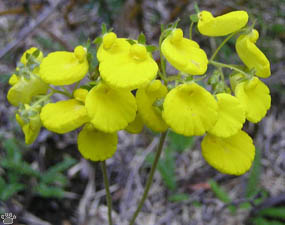 |
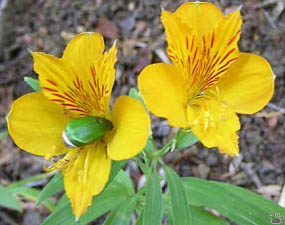 |
| The most famous flowers of Chile
include 12 species of Calceolaria (left) and 35 species of Alstroermia
(right, with Brachysternus beetle). Isla Chiloe. |

Melpa (Empetrum rubrum), Parque Nacional
Laguna San Rafael, Chile. |
This area has a lot of endemic plants, most of them
survivors of ancient Antarctic flora. Parasitic plants are especially diverse.
Wildlife includes two endemic species of deer, numerous rodents, and some little-known
predators such as Patagonian weasel (Lyncodon patagonicus). |

Unidentified parasitic plant, Parque Nacional
Laguna San Rafael, Chile. |

Sunday in Balmacedo, Southern Chile. |

Carretera Austral, Parque Nacional Hornopiren. |
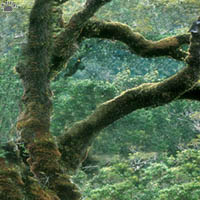
Notophagus forest, Parque Nacional Queluat. |
Many parts of the region have never been explored
thoroughly. If there is a place on Earth where you might still hope to find dinosaurs,
it's probably the remote valleys of Southern Chile. Cold-resistant dinosaurs have
lived there in the past; other "living fossils" are still present. |
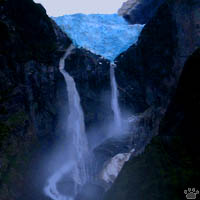
Hanging Glacier, Parque Nacional Queluat. |

Perito Moreno Glacier. |
Part 4. The Andes of Argentina
Back to Part 2
Home
|